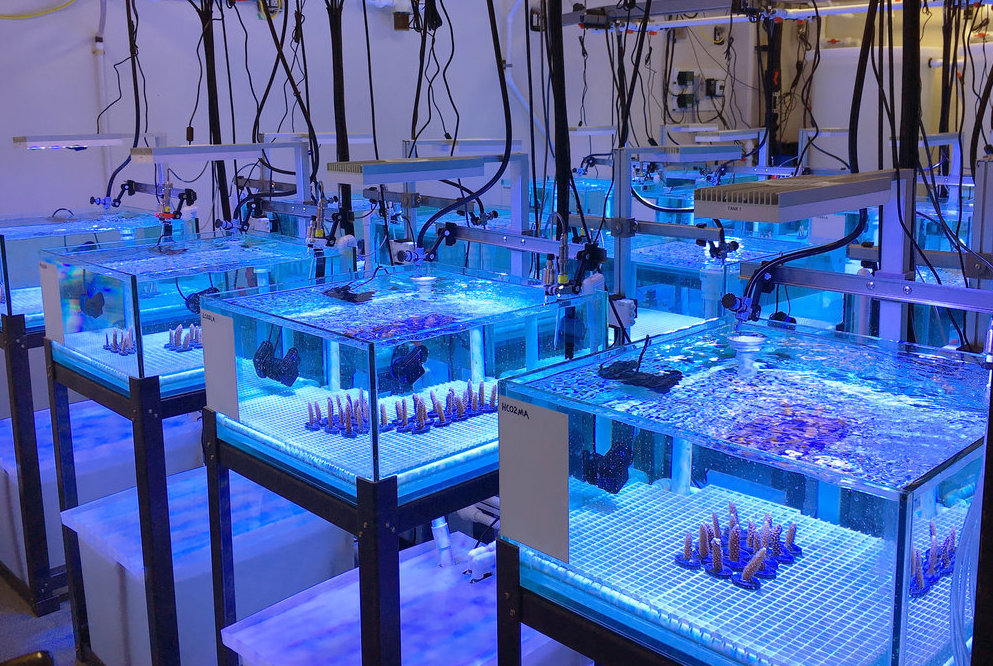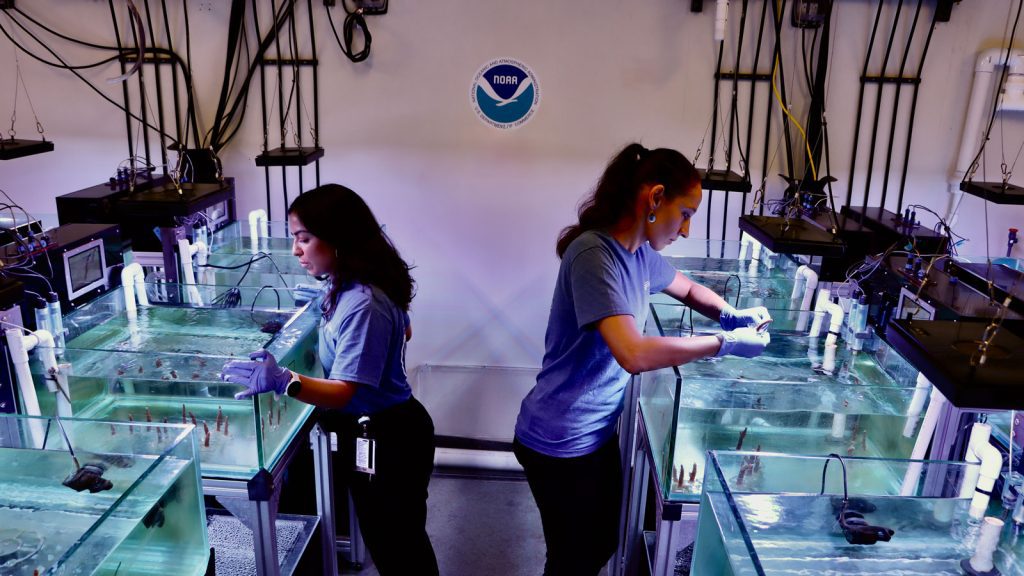In a new study, scientists at AOML and the University of Miami’s Cooperative Institute for Marine and Atmospheric Sciences (CIMAS) demonstrated how some genotypes of the reef-building coral Acropora cervicornis (Staghorn Coral), listed on the Endangered Species Act, proved resilient when exposed to high nutrient levels or disease, but not when the two stressors were combined.
In the Experimental Reef Lab, ten key Acropora cervicornis genotypes – corals of the same species with slightly different genetic makeups – were evenly distributed across independently-controlled tanks. Half of the tanks were exposed to elevated levels of nitrogen (specifically, in the form ammonium) for six weeks, while the other half served as a control group under normal conditions.
Initially collected from three coral nurseries at Florida’s Fish and Wildlife Conservation Commission (FWC), Coral Restoration Foundation (CRF), and the University of Miami, scientists at AOML monitored how these different genotypes responded to nutrient concentrations both typically seen on reef ecosystems and concentrations considered excessive – usually due to nutrient runoff and pollution.
After the six weeks, each coral was exposed to one of two treatments: one being a placebo and the other a coral tissue infected with a white disease found in coral outplants.

Acropora cervicornis coral fragments being exposed to varying ocean conditions in the Experimental Reef Lab (ERL), located at the University of Miami’s Rosenstiel School.
With each A. cervicornis genotype then exposed to all combinations of normal or heightened nutrient levels and disease or no disease simultaneously, scientists at AOML analyzed the fragments daily, examining any tissue loss, and overall survivorship.

Analyzing tissue loss (white spot) of a coral fragment following exposure to nutrients and disease
Ultimately, while high nutrient levels alone led to mortality among some corals, seven genotypes proved resilient to the elevated concentrations of ammonium. In contrast, only one coral genotype proved resilient in the face of disease and normal nutrient levels while the other nine experienced either moderate or complete mortality.
However, when both disease and high nutrient levels were combined, none of the ten genotypes proved resilient – with all experiencing either moderate or complete mortality.
This study emphasizes how essential reef-building corals may prove resilient to a single environmental stressor, but when facing a combination of stressors simultaneously that we see across marine ecosystems today, the impacts are exacerbated.
To build on these findings, scientists at AOML and the University of Miami now seek to better understand how different combinations of five major stressors are impacting North America’s only barrier reef with a bold and unprecedented new project – aiming for new ways to enhance resilience of crucial species in the face of a changing climate.
See the full press release here: https://news.miami.edu/rosenstiel/stories/2025/03/coral-diseases-and-water-quality-play-a-key-role-for-coral-restoration-and-survival-efforts.html

CIMAS Scientists Ana Palacio, Ph.D. and Stephanie Rosales, Ph.D. analyze coral fragments in the Experimental Reef Lab, Photo Credits: Diana Udel, University of Miami
